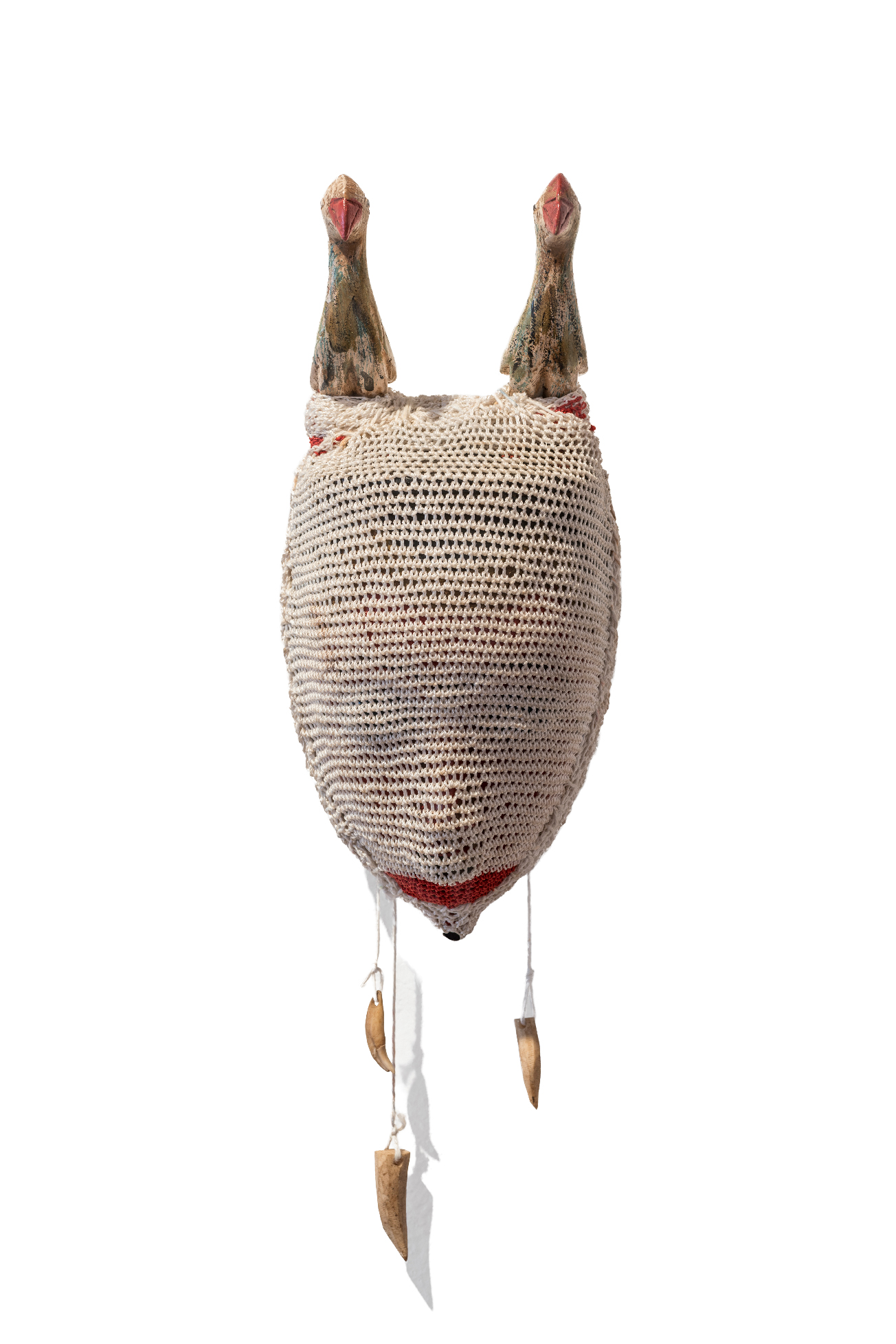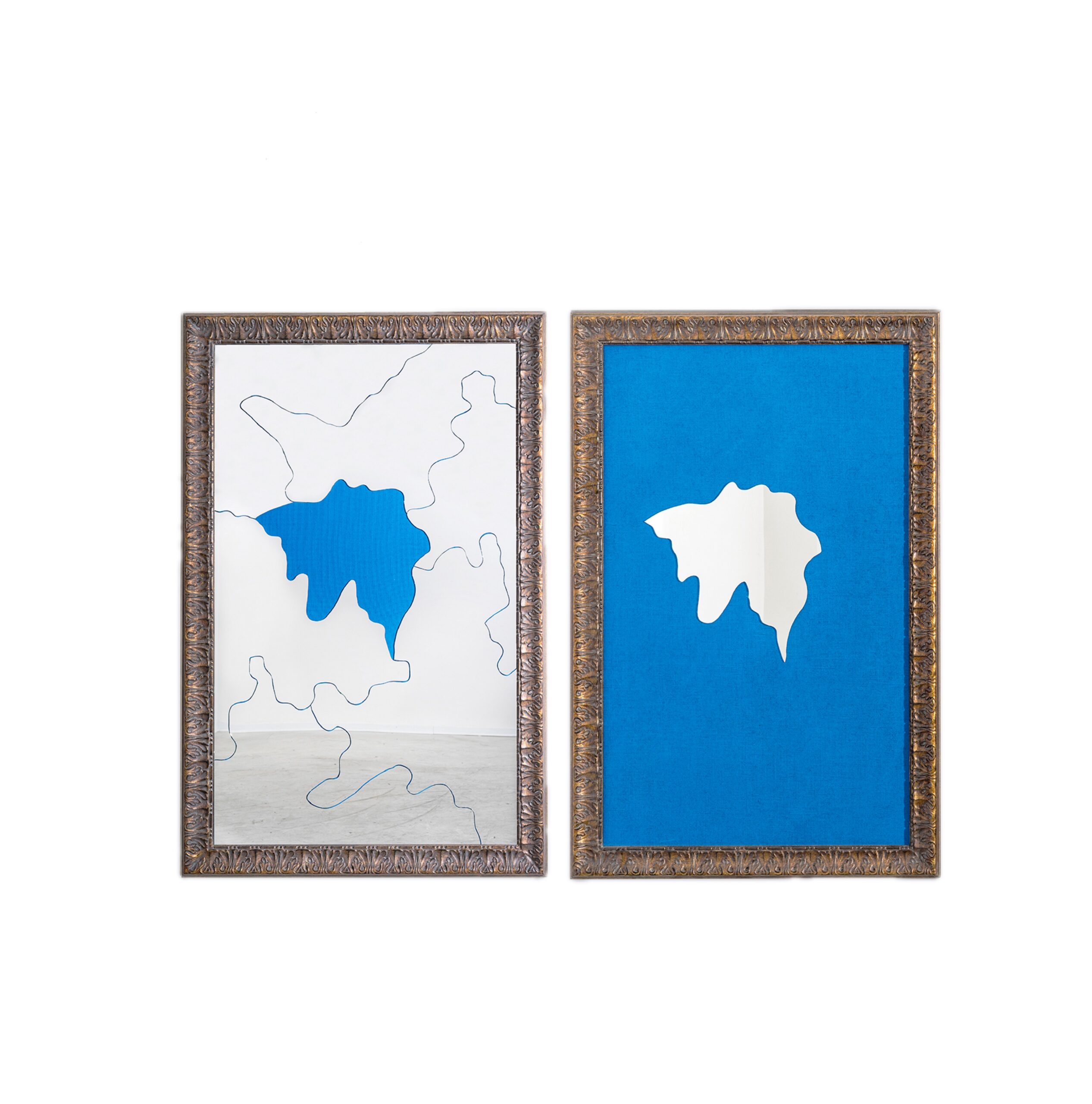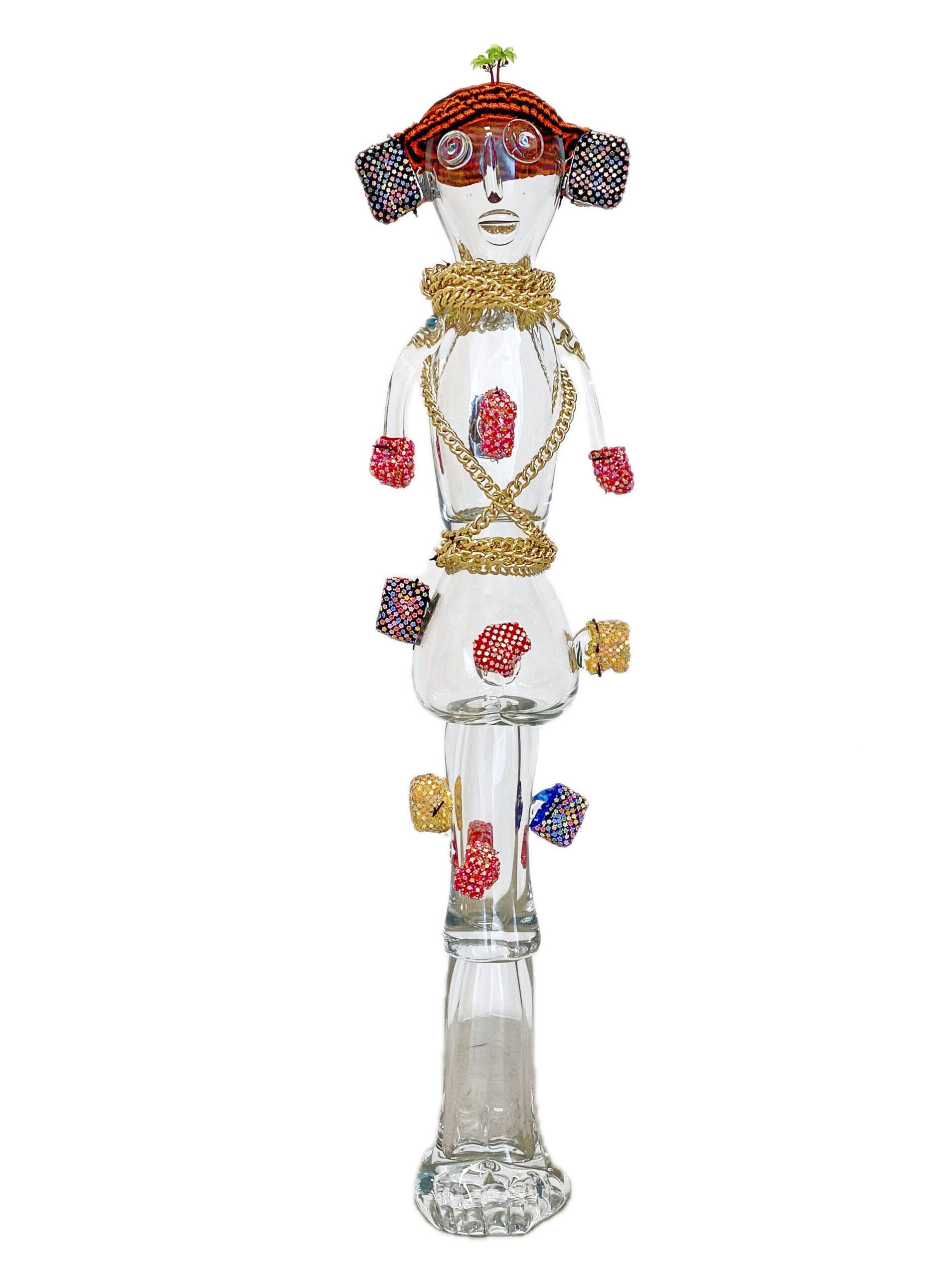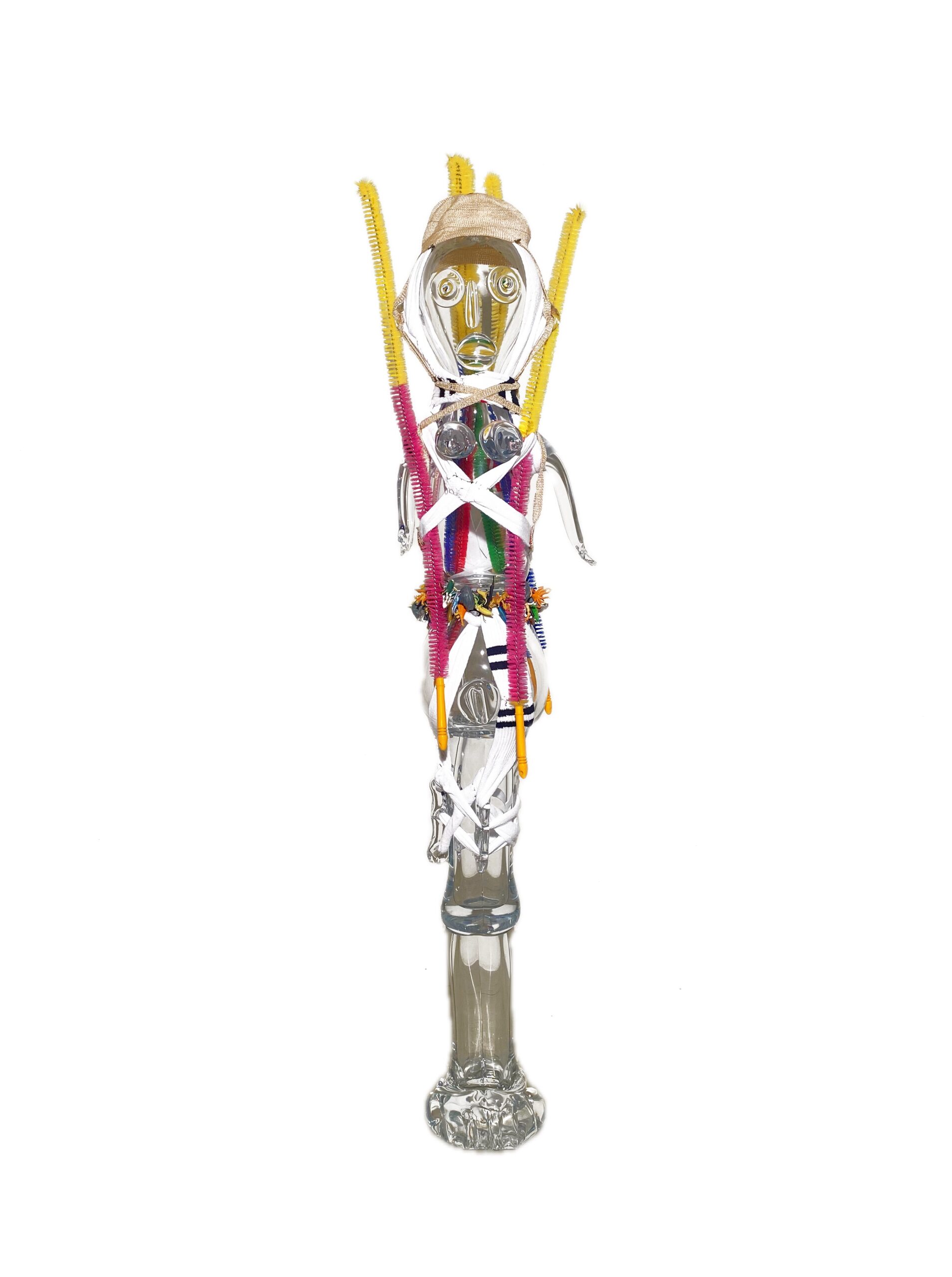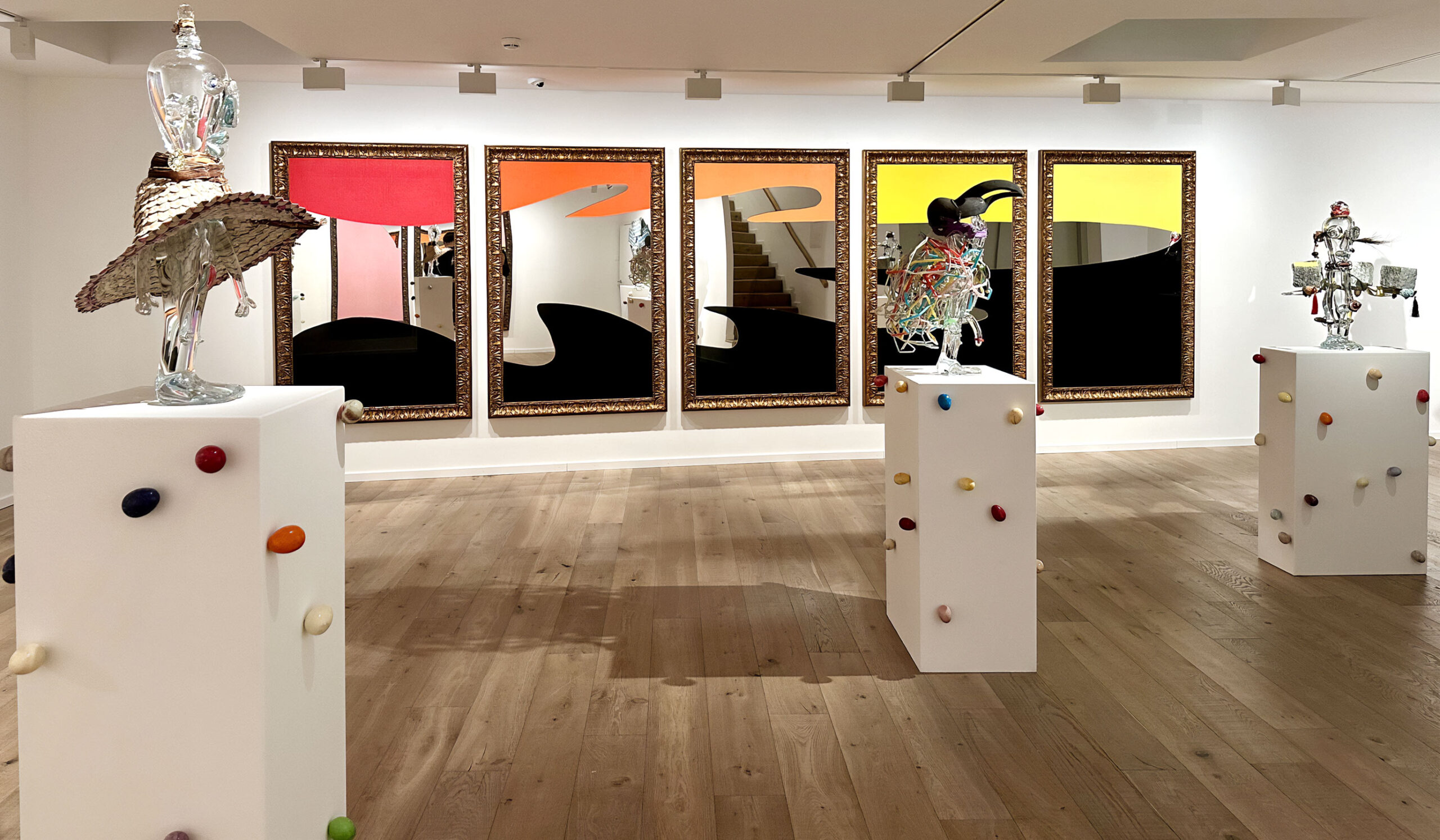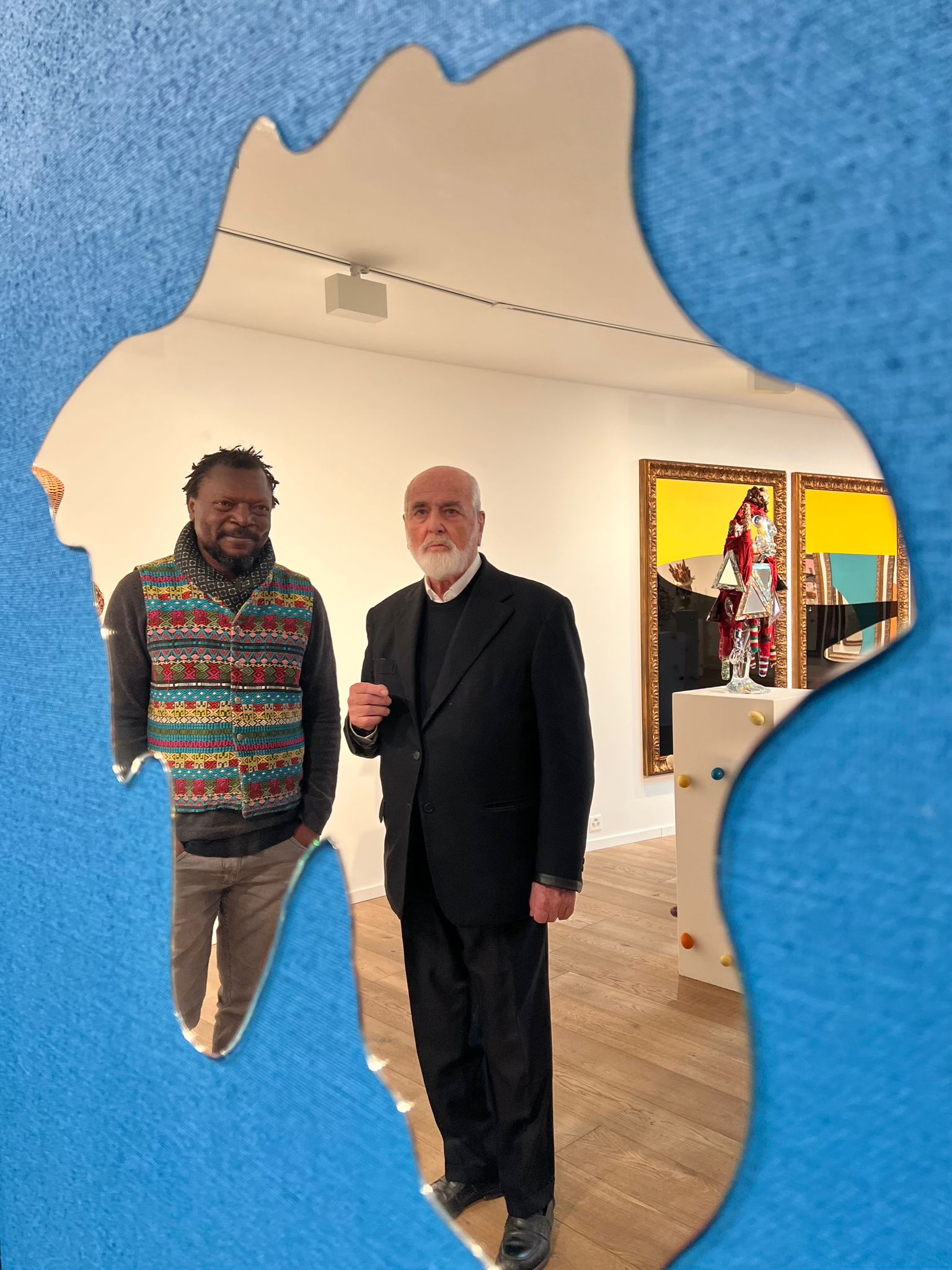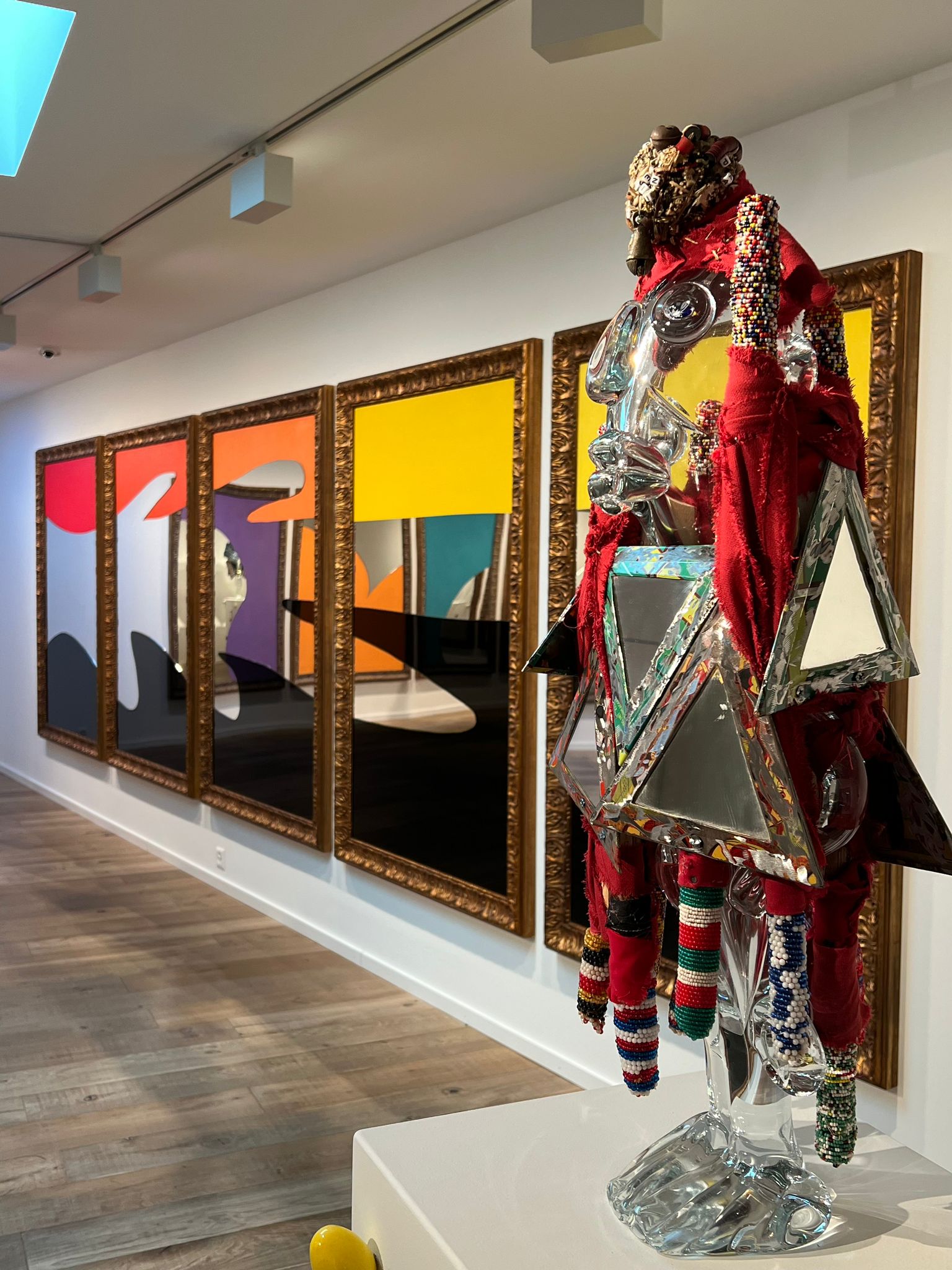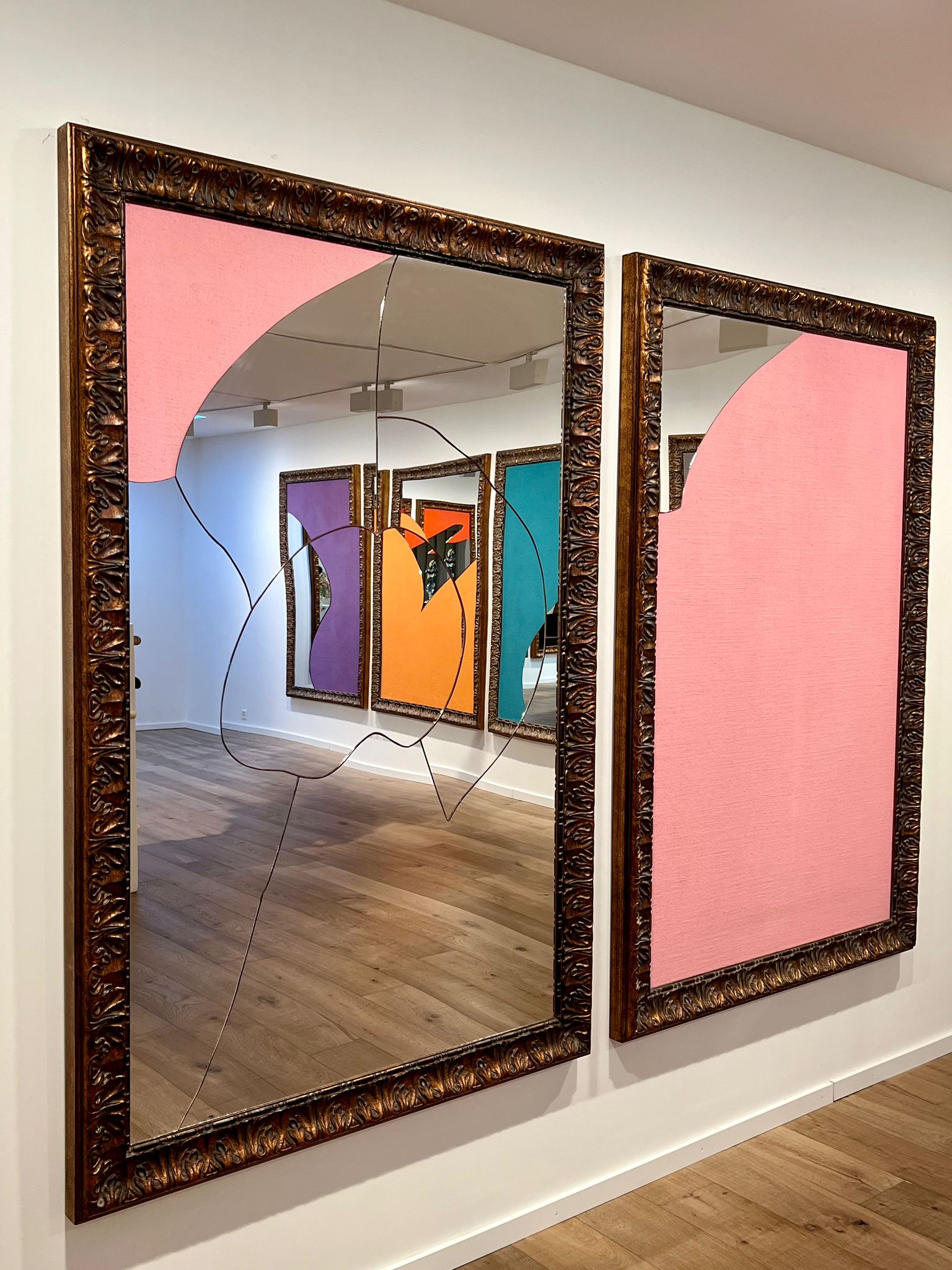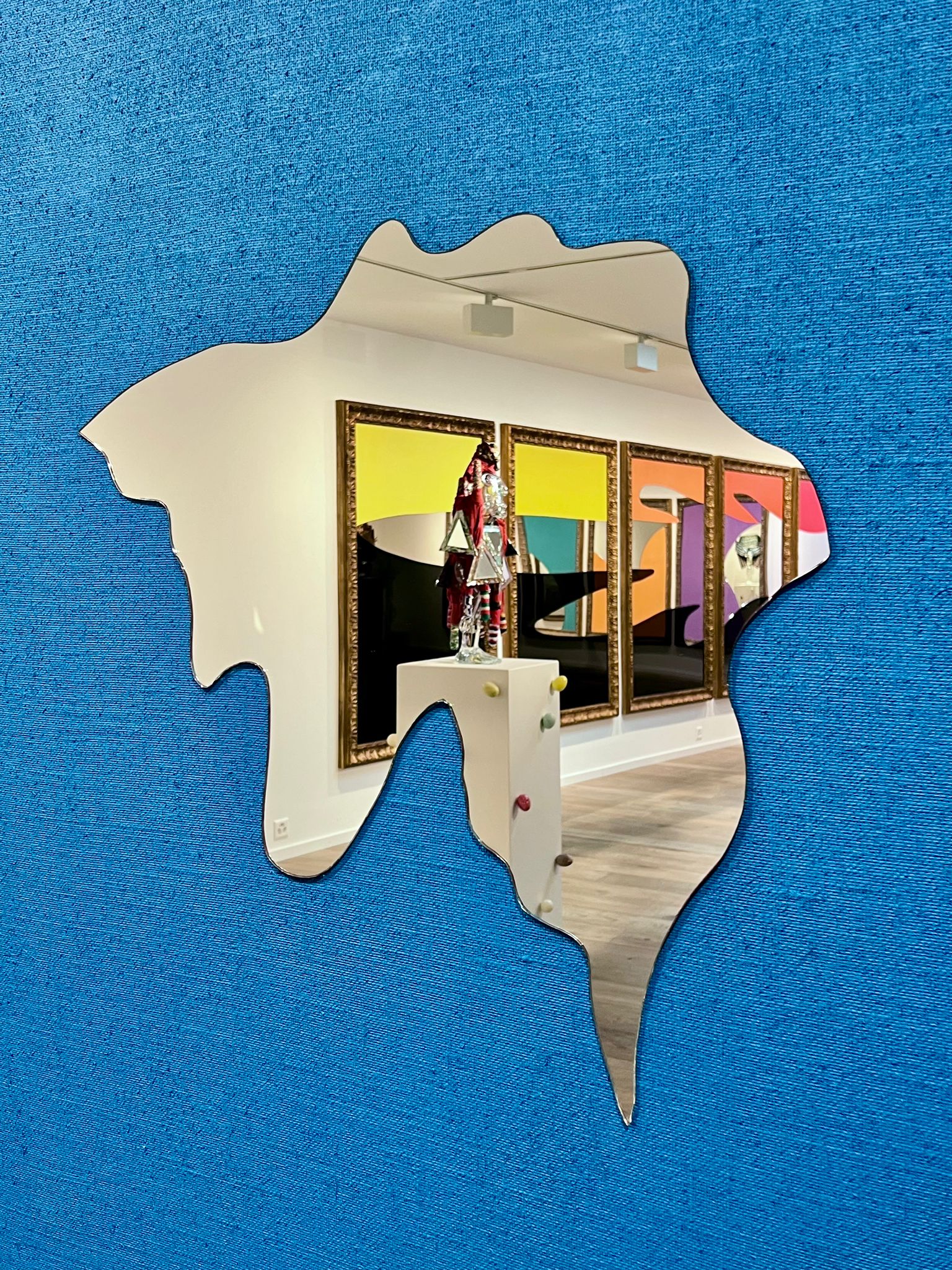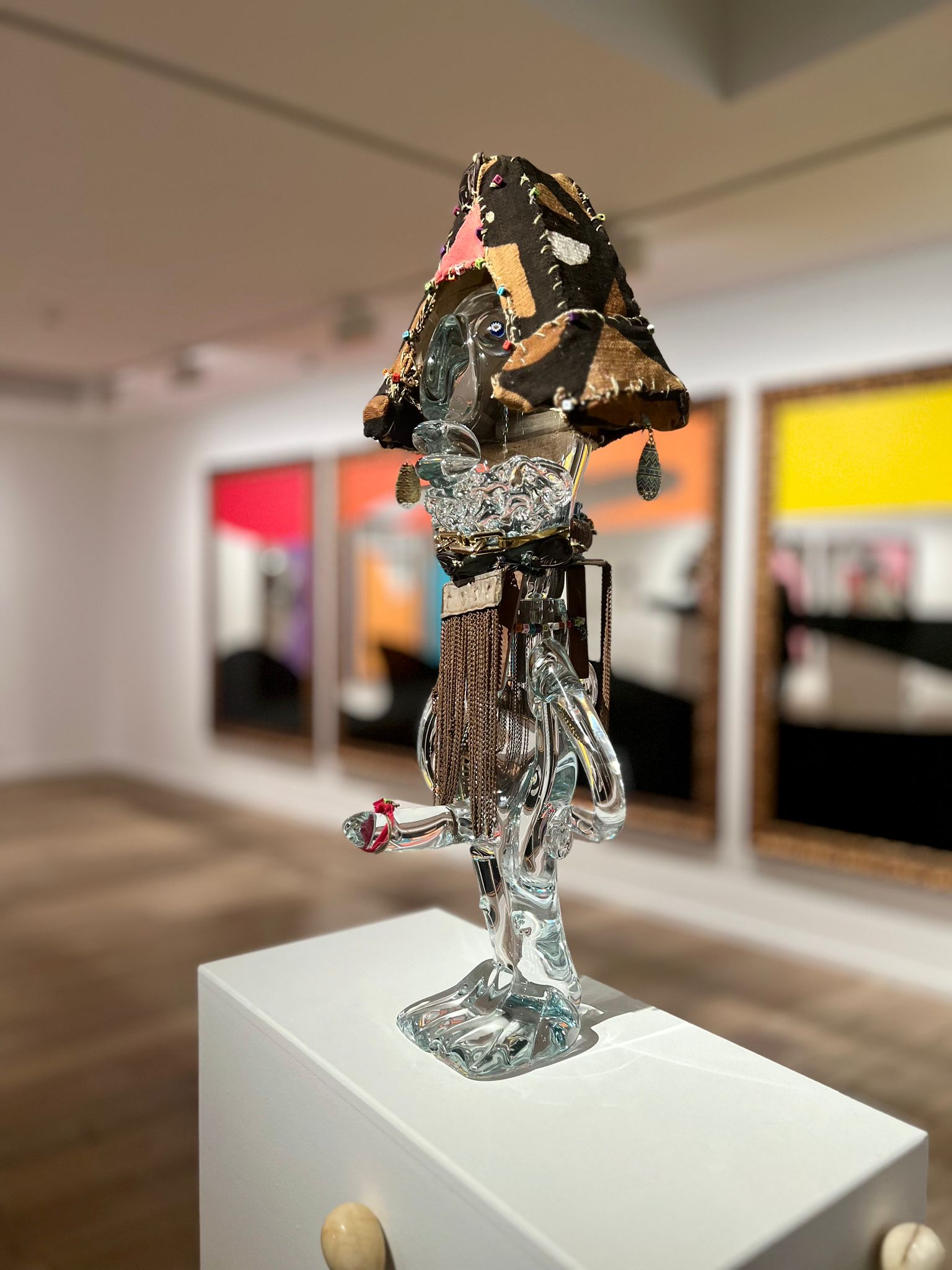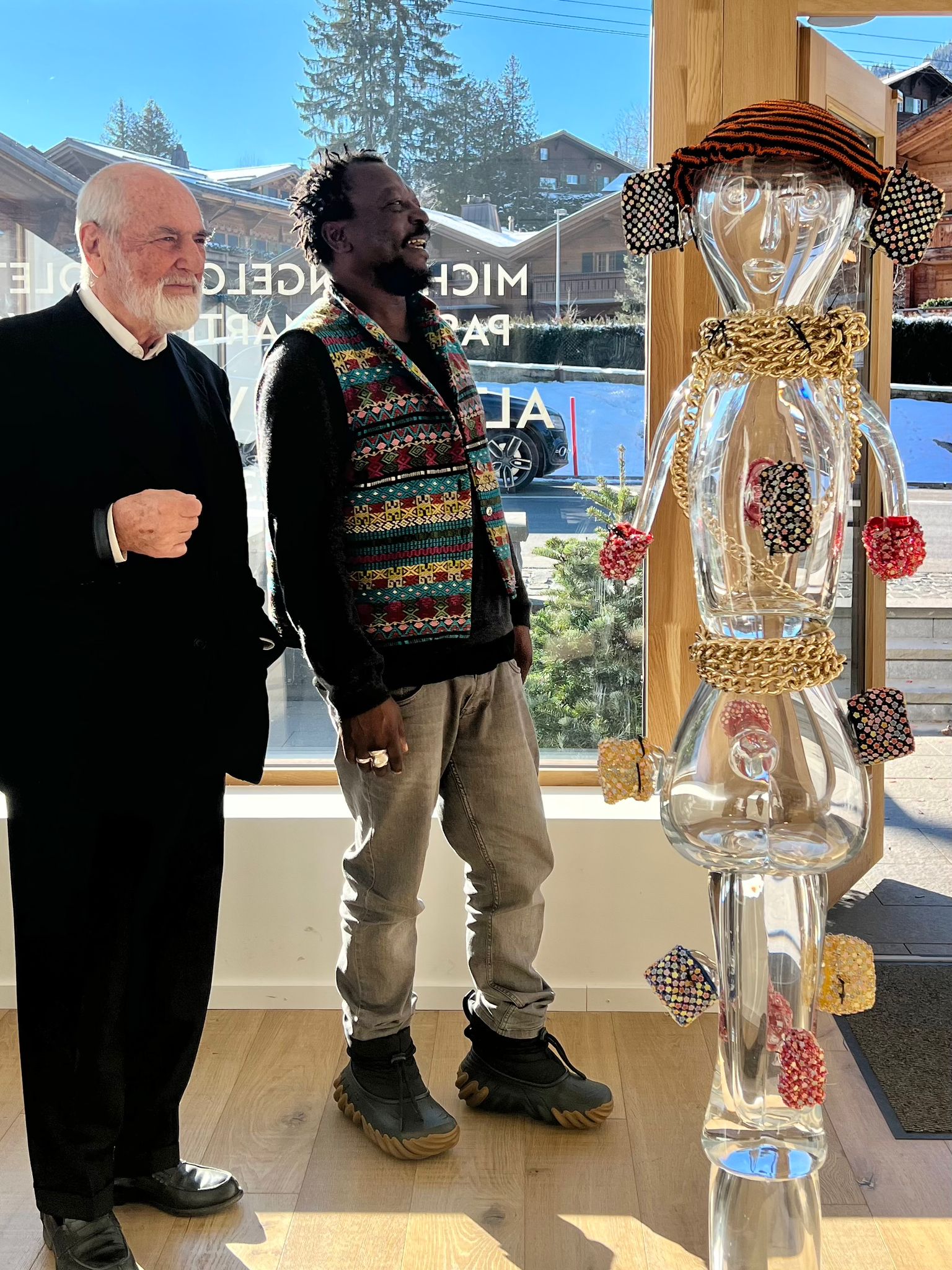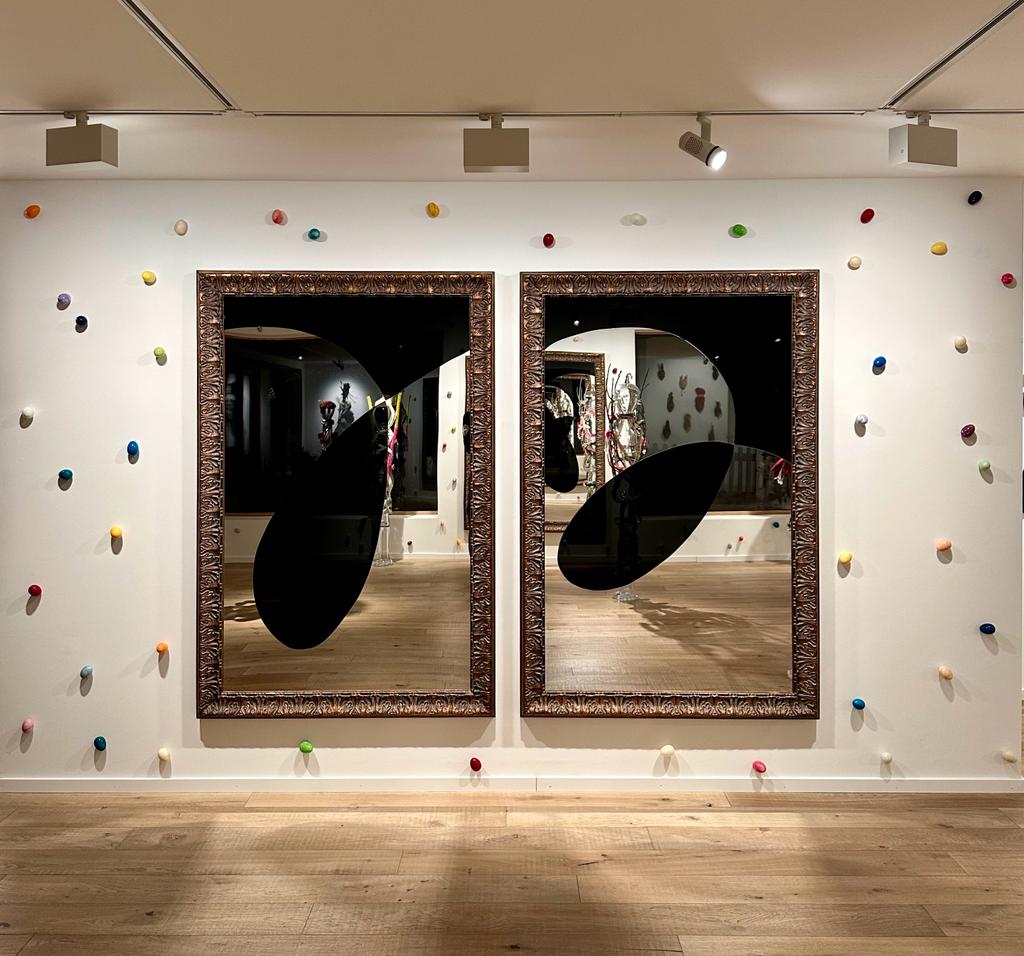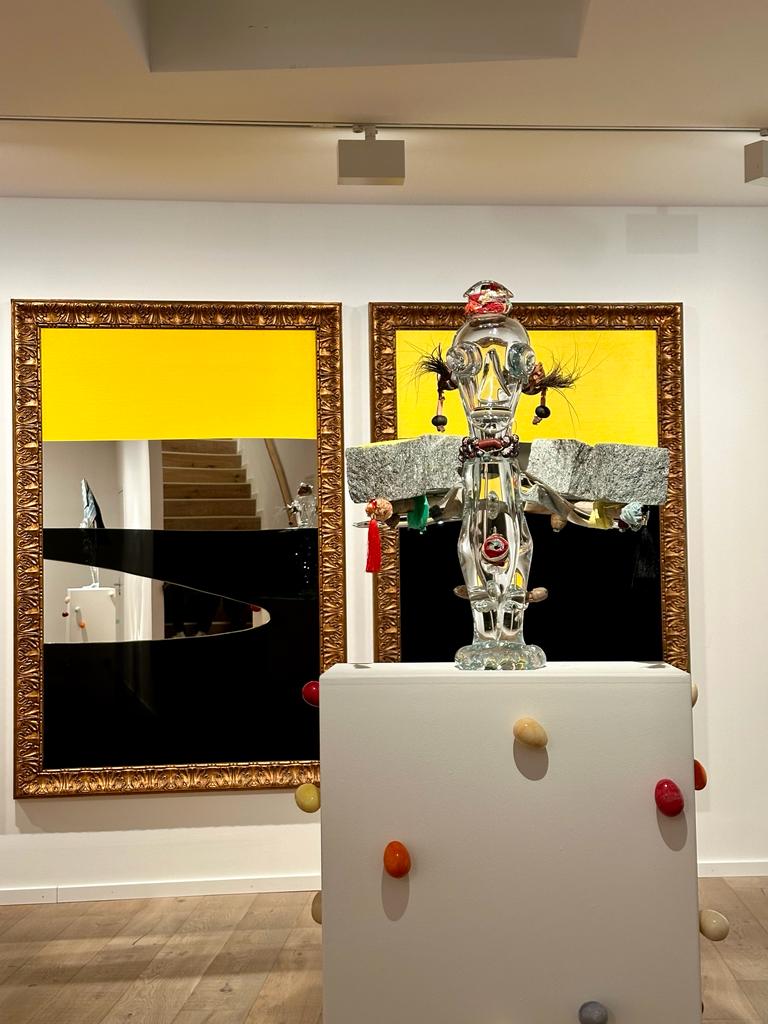Alternative Centers
-
![]() Michelangelo Pistoletto
Michelangelo Pistoletto
Color and light,2014
Juta, mirror, gilded wood – 4 elements
180 x 120 cm each -
![]() Michelangelo Pistoletto
Michelangelo Pistoletto
Black and Light,2017
Black and silver mirror, gilded wood
180 x 120 cm each -
![]() Michelangelo Pistoletto
Michelangelo Pistoletto
Color and light,2016
Juta, mirror, gilded wood
180 x 120 cm each -
![]() Pascale Marthine Tayou
Pascale Marthine Tayou
Double Masks,2016
Wooden masks, mixed media
-
![]() Michelangelo Pistoletto
Michelangelo Pistoletto
Color and light,2016
Juta, mirror, gilded wood
180 x 120 cm each -
![]() Pascale Marthine Tayou
Pascale Marthine Tayou
Totem Cristal,2019
Crystal, mixed media
200 cm -
![]() Pascale Marthine Tayou
Pascale Marthine Tayou
Totem Cristal,2019
Crystal, mixed media
200 cm
Patricia Low Contemporary is delighted to present Alternative Centers, a joint exhibition by Michelangelo Pistoletto and Pascale Marthine Tayou, in collaboration with Galleria Continua.
Alternative Centers offers a unique creative dialogue between two contemporary visions of art represented by the works of Michelangelo Pistoletto and Pascale Marthine Tayou. As the title refers to an idea of collective identity, the exhibition creates a social dimension of encounter and discovery, bringing together the two artists’ centres of interest. The creation of art that is open to dialogue and exchange is undoubtedly the strongest link uniting these two artists, one which would be tested for the first time in 2019 at the exhibition Una cosa non esclude l’altra – One thing doesn’t exclude the other presented by GALLERIA CONTINUA in San Gimignano, Italy. For this exhibition, Michelangelo Pistoletto is presenting the series Black and Light and Color and Light.
Begun in 2007 and 2014 respectively, they explore the relationship between colour and light. As the first series is the precursor to the second, the two series form a chronological exhibition on the transition from non-colour (black) to colour. It also traces the themes that run through the artist’s entire oeuvre, from his upbringing with his restorer father, to his first pictorial works, not to mention his links with Arte Povera, the main post-war Italian artistic movement favouring the use of simple materials. The mirror, an omnipresent medium in the artist’s practice, which he sees as a container for infinity, is present in Black and Light and Color and Light in fragmentary form.
Michelangelo Pistoletto has this to say about the Color and Light series: “It’s a work of broken mirrors, but executed in an ordered way. The contours produced by breaking the mirror itself are included in the mirror, and these contours form a puzzle. […] The universal figure of the mirror is divided and multiplied by breaking and cutting, to become an infinite number of unique figures. Each fragment of the mirror can be considered as a person who is part of a larger mirror – society. Society is like a big mirror”.
Pascale Marthine Tayou is presenting a selection of sculptural works such as the Totems Cristal (Crystal Totems) and the Poupées Pascale (Pascale’s Dolls), dotting the gallery space with the installation Pascale’s eggs. Faithful to his use of disparate materials of diverse origins, the artist’s works embody the process of creolisation theorised by Édouard Glissant, a “mixture of arts and languages that produces the unexpected […], a space where dispersion allows for connections, where cultural clashes, disharmonies, and disorders and interferences become creative forces”.
His work with crystal stems from an illusion the artist experienced during a trip to Venice: he thought he saw a Murano glass sculpture with African shapes, but when he got closer he discovered his eyes –or his mind – had deceived him. This is how he began to reflect on the qualities of the transparent material, allowing him to explore the spirituality of his creations in a new light and opening the way to new rituals.
Michelangelo Pistoletto was born in Biella, Italy in 1933. In 1962, he produced Quadri Specchianti (Mirror Paintings), for which he received international recognition. Between 1965 and 1966, he produced the Oggetti in meno (Minus Objects), considered fundamental to the birth of the Arte Povera movement. In the 1990s, he founded the Cittadellarte-Fondazione Pistoletto in Biella, with the aim of inspiring and producing responsible social change. That same year, he won the Golden Lion award at the Venice Biennale for Lifetime Achievement. In 2004, the University of Turin awarded him an honorary degree in political science. In that same year the artist announced the most recent phase of his work, Terzo Paradiso (Third Paradise). In 2007, in Jerusalem, he was awarded the Wolf Foundation Prize for the Arts, “for his consistently inventive career as an artist, educator and activist, whose ceaseless intelligence has created visionary art forms that contribute to a new understanding of the world”. In 2013, the Louvre in Paris hosted his solo exhibition Michelangelo Pistoletto, année un – le paradis sur terre (Michelangelo Pistoletto, Year 1: Earthly Paradise). That same year, he was awarded the Praemium Imperiale for painting in Tokyo. In 2017, he took part in the 57th Venice Biennale with Un et un font trois (One and one make three), a collateral event at the Basilica of San Giorgio. In December 2022, the artist published his latest book, La formule de la création (Formula of Creation), in which he retraced the fundamental stages and evolution of his entire artistic career and his theoretical thinking. His works can be found in the world’s leading museums of modern and contemporary art.
Pascale Marthine Tayou (Nkongsamba, Cameroon, 1966) lives and works in Ghent, Belgium and Yaoundé, Cameroon. Since the 1990s, Tayou has been practising an art that knows no boundaries, that is intuitive and hybrid, mixing and assembling objects taken from her everyday life. Through a multitude of media and forms – drawings, installations, texts, performances, photographs, videos and sculptures – he diverts these objects from their original purpose. He transforms them and “relocates” them in new, sensitive situations where the world is seen in terms of social, cultural and political constructs which he sets out to thwart. In this spirit of deconstructing established models, Tayou added an “e” to his two first names very early on. By adding this feminine ending, he ironically distances himself from the question of artistic paternity and the attributes associated with masculinity/femininity. The artist has taken part in many major international art exhibitions and events, including the Gwangju Biennial (1997 and 1999), the Santa Fe Biennial (1997), the Sydney Biennial (1997), the Havana Biennial (1997 and 2006), the Liverpool Biennial (1999), the Berlin Biennial (2001), the Sao Paulo Biennial (2002), the Munster Biennial (2003), the Istanbul Biennial (2003), the Lyon Biennial (2000 and 2005), the Venice Biennial (2005 and 2009) and the Documenta 11 Biennial (2002), and has exhibited his work in museums around the world.



